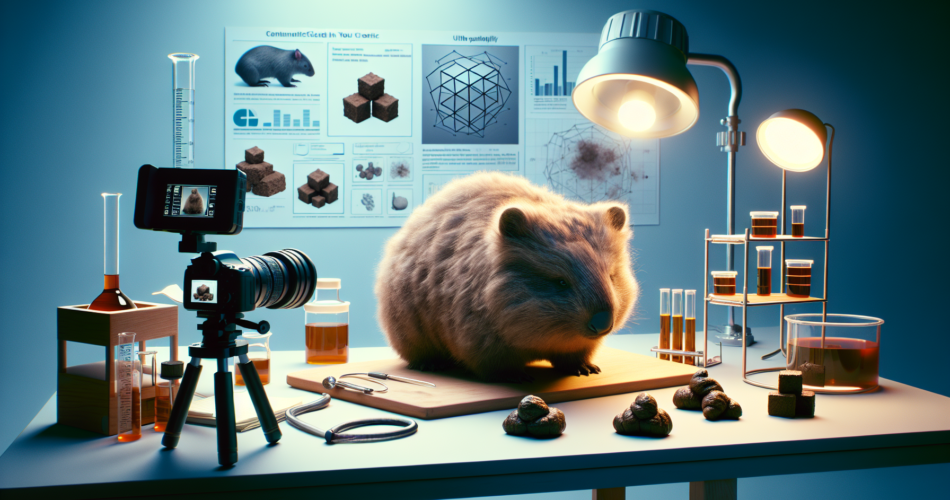Wombats, the beloved Australian marsupials, have long fascinated both scientists and the general public alike. One of the most peculiar aspects of these creatures is their unique method of excreting waste: wombat poop is cubic in shape. This unusual phenomenon has piqued the interest of researchers, prompting numerous studies to uncover the biological mechanisms behind it. Understanding the science behind wombat poop not only sheds light on the animal’s physiology but also provides intriguing insights into evolutionary adaptations.
Unraveling the Mystery of Wombat Cubic Excrement
The first step in understanding why wombat poop is cubic lies in the structure of the wombat’s intestines. Unlike most mammals, which typically produce round or oval-shaped feces, wombats possess a unique intestinal architecture that facilitates the formation of cubic stools. The intestines are long and muscular, creating varying levels of pressure along the digestive tract. This specialized shape allows the feces to be compressed into six-sided forms as they travel through the digestive system, culminating in the distinctive cube shape.
Researchers have noted that the composition of the wombat’s diet plays a critical role in the formation of its feces. Wombats primarily consume tough, fibrous grasses, which require a lengthy digestion process to break down. As the food is digested, the moisture is absorbed along the intestinal walls, and the remaining material becomes increasingly dense. The combination of the intestines’ muscular contractions and the food’s fibrous nature culminates in the production of well-formed, cubic excrement. This adaptation may serve a practical purpose—cubic feces are less likely to roll away, marking territory effectively without the need for constant re-application.
The cubic shape of wombat feces also raises questions about the evolutionary advantages it may confer. In the wild, wombats are known to use their droppings as markers to define their territory. The fact that the feces does not roll away signifies a strategic advantage; it remains prominently visible to other wombats, reducing territorial disputes and potential confrontations. This unique method of waste disposal may have been favored by natural selection, allowing wombats to compete more effectively for resources in their environment.
The Role of Gravity and Intestines in Wombat Waste Formation
Gravity plays a significant role in the development and expulsion of cubic feces. As the waste moves through the wombat’s long intestines, gravity assists in the compaction of the material. The varying muscular contractions of the intestinal walls facilitate the molding of the fecal matter into its characteristic cube shape. The interplay of gravity and muscle contractions ensures that the waste maintains its form even as it exits the body, contributing to the overall effectiveness of the cubic design.
Additionally, the unique structure of the wombat’s intestines is integral to this process. The intestines exhibit distinct regions that allow for the gradual transition of waste from liquid to solid. Each section of the intestine contributes differently to the shaping of the feces, with one area focusing on dehydration and another on molding. As a result, the waste is subjected to a series of pressure gradients, which ultimately leads to the cubic formation. This remarkable adaptation highlights the intricate relationship between anatomy and waste management in wombats.
Moreover, the efficiency of this system reflects the evolutionary pressures faced by wombats in their natural habitats. The ability to produce cubic feces not only aids in territory marking but also minimizes resource waste. In a challenging environment where food is often scarce, the wombat’s digestive system maximizes the extraction of nutrients, ensuring that their energy needs are met. By evolving a waste management system that aligns with their ecological needs, wombats exemplify the delicate balance between anatomy, behavior, and environmental adaptation.
The cubic excrement of wombats is a remarkable example of nature’s ingenuity. Through a complex interplay of intestinal structure, dietary choices, and gravitational influences, these marsupials have developed an effective method for waste disposal that serves both practical and evolutionary purposes. As research continues to delve into the science behind this unique phenomenon, the wombat stands as a testament to the wonders of biological adaptation in the wild. Understanding the intricacies of wombat poop not only enriches our knowledge of these fascinating creatures but also underscores the importance of studying animal adaptations in the context of their environments.

